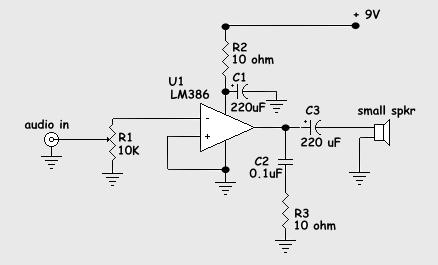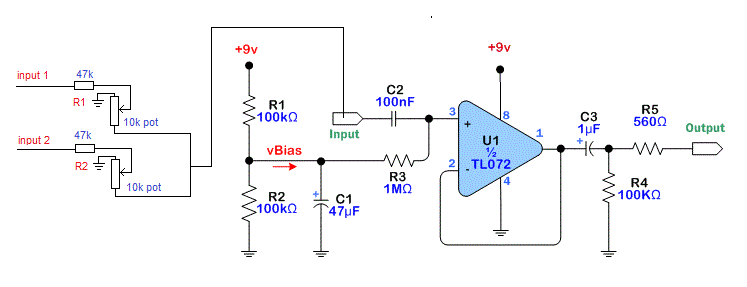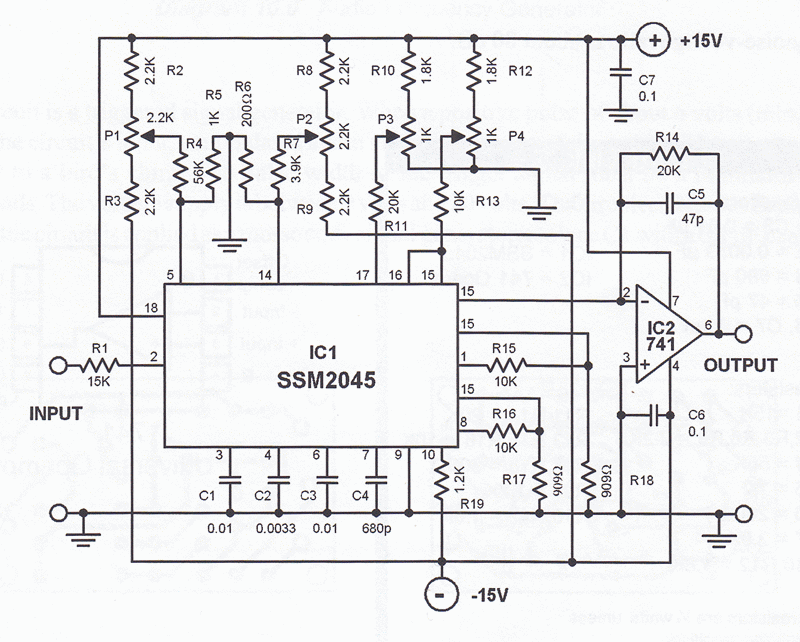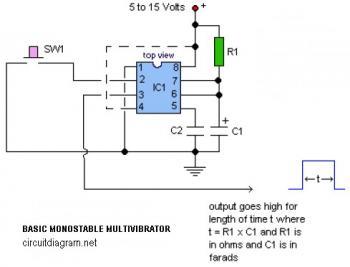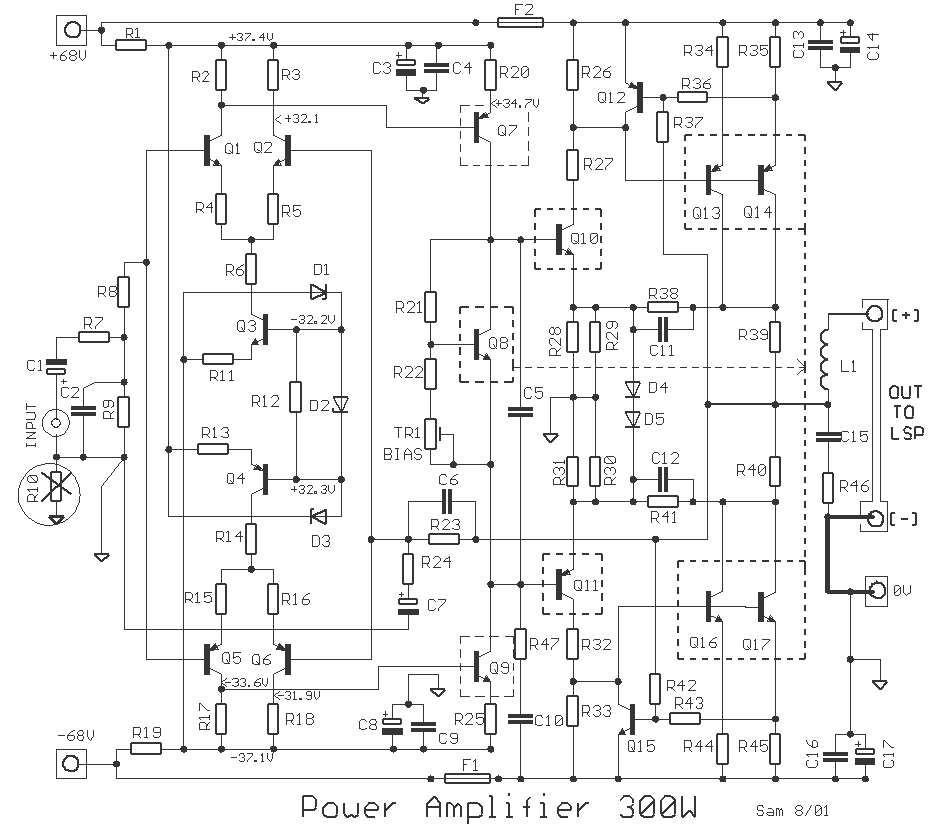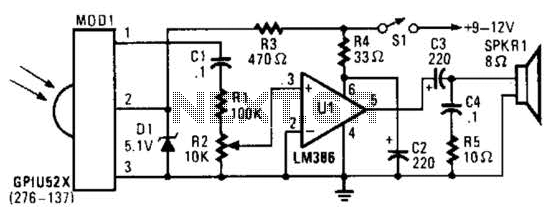
Five uses tri-state logic audio pen CD4066 555
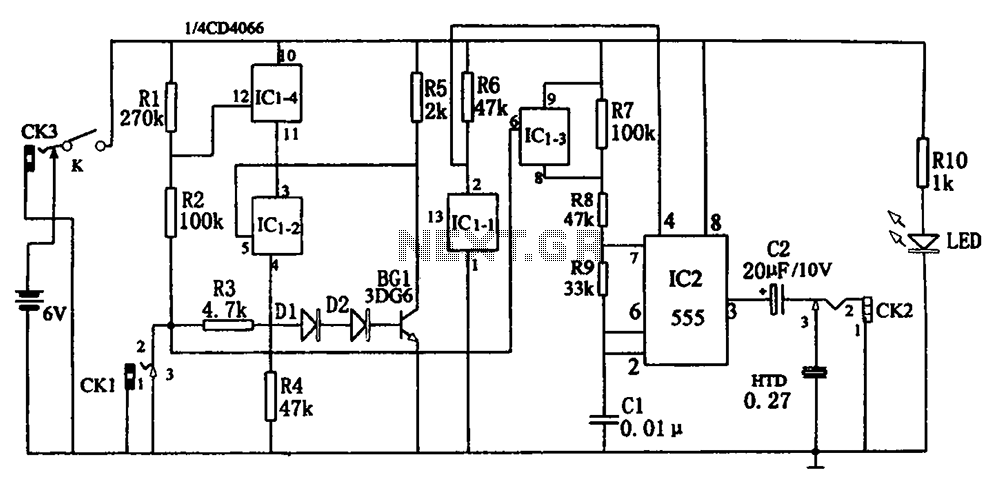
The circuit, illustrated in Figure five, employs a tri-state logic pen audio circuit. It primarily consists of a multivibrator, a four-way switch (CD4066, IC1), and several RC components. The multivibrator (555, IC2), along with resistors R7, R8, R9 and capacitor C1, is responsible for generating the oscillation frequency that controls IC1's three states.
The circuit utilizes a 555 timer configured in astable mode, which generates a continuous square wave output. This output is used to control the four-way switch (CD4066), allowing for the selection between different audio signals or pathways. The CD4066 is a quad bilateral switch that can connect or disconnect four independent signal paths, providing flexibility in routing audio signals based on the state of the multivibrator.
Resistors R7, R8, and R9, in conjunction with capacitor C1, determine the frequency and duty cycle of the oscillation produced by the 555 timer. The values of these components can be adjusted to set the desired operating frequency of the multivibrator, which directly influences the switching rate of the CD4066.
This tri-state logic pen audio circuit is particularly useful in applications requiring dynamic audio signal routing, such as in mixers or effects processors, where multiple audio sources need to be switched seamlessly. The integration of the multivibrator and the CD4066 allows for efficient control of audio pathways, enabling complex audio manipulation without the need for mechanical switches, thereby enhancing reliability and reducing wear over time.As shown in Figure five uses tri-state logic pen audio circuit. The circuit mainly by the multivibrator, four-way switch CD4066 (IC1) circuit with some RC com ponents consisting of other components. Wherein the multivibrator 555 (IC2) and R7, R8, R9, C1 constituted by the oscillation frequency off IC1-3 state control.
The circuit utilizes a 555 timer configured in astable mode, which generates a continuous square wave output. This output is used to control the four-way switch (CD4066), allowing for the selection between different audio signals or pathways. The CD4066 is a quad bilateral switch that can connect or disconnect four independent signal paths, providing flexibility in routing audio signals based on the state of the multivibrator.
Resistors R7, R8, and R9, in conjunction with capacitor C1, determine the frequency and duty cycle of the oscillation produced by the 555 timer. The values of these components can be adjusted to set the desired operating frequency of the multivibrator, which directly influences the switching rate of the CD4066.
This tri-state logic pen audio circuit is particularly useful in applications requiring dynamic audio signal routing, such as in mixers or effects processors, where multiple audio sources need to be switched seamlessly. The integration of the multivibrator and the CD4066 allows for efficient control of audio pathways, enabling complex audio manipulation without the need for mechanical switches, thereby enhancing reliability and reducing wear over time.As shown in Figure five uses tri-state logic pen audio circuit. The circuit mainly by the multivibrator, four-way switch CD4066 (IC1) circuit with some RC com ponents consisting of other components. Wherein the multivibrator 555 (IC2) and R7, R8, R9, C1 constituted by the oscillation frequency off IC1-3 state control.
